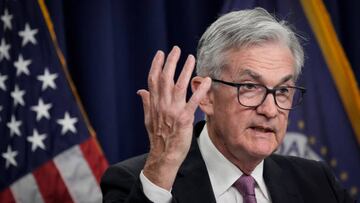The Federal Reserve raises interest rates: How does the Fed rate hike help control inflation?
The Federal Reserve announced another historic base rate increase of seventy-five base points or point seventy-five percent, how will this move impact inflation?

The Federal Reserve in the United States has two primary mandates: creating market conditions conducive to full employment and keeping inflation under control. Typically, a goal of one to two percent inflation each year is expected each year and currently the country is opperating far above these averages. With inflation high and unemployment at historic lows, the tension between these two economic indicators, and what they mean for the lives of millions, are emerging.
The Federal Reserve’s Summary of Economic Projections released on 15 June 2022 and showed an increase in the unemployment rate this year, in 2023, and in 2024.
| Year (Q4) | Unemployment Rate | Compared to UR |
|---|---|---|
| 2022 | 3.7 percent | +0.1 percent |
| 2023 | 3.9 percent | +0.2 percent |
| 2024 | 4.1 percent | +0.4 percent |
As for inflation, the US Central Bank projects inflation to hit 5.2 percent, up from the 4.3 percent figure released in their March forecasting report. The Fed calculates expected inflation rate by tracking changes in the consumer prices, excluding food and energy commodities. These two commodity groups have led the surge in inflation across the country and therefore the rate projected is much smaller than what the public has sen from the Bureau of Labor Statistics (BLS).
Based on BLS June CPI numbers, even when taking out food and energy cost increases, inflation has already surpassed the Fed’s projection, hitting 5.9 percent. This means that for the rate to reach its projected value, we would need to see decreases in prices at a large scale through the remaining months of the year.
To slow inflation in the market, the Federal Reserve has one primary tool: increasing interest rates.
In June, the Fed increased interest rates by 75 base points of 0.75 percent, followed by another increase of the same size on Wednesday, 27 July. The second increase was voted on unanimously by all of the Governors of the various Federal Reserve districts. The theory of change is that by increasing the cost of borrowing, firms will begin to slow their growth and take on less debt and perhaps higher fewer people.
This move has two key effects.
The first is that wages fall as there are more workers competing for fewer jobs in the labor market. The second is that unemployment may increase, which in a fairly brutal fashion leads the purchasing power of some households to fall significantly, decreasing demand for some goods across the market.
Some businesses are doing just fine
Although interest rates increases are supposed to slow business growth and spending, many critical sectors are raking in record profits while households across the country struggle to keep up.
Shell just released their Quarter 2 earnings, and the figure came in at a staggering $11.9 billion. The British oil giant is the first to release its revanue totals for the last quarter, with BP, and US-based oil companies like Chevron and Exxon Mobile expected to release their reports in the coming days.






